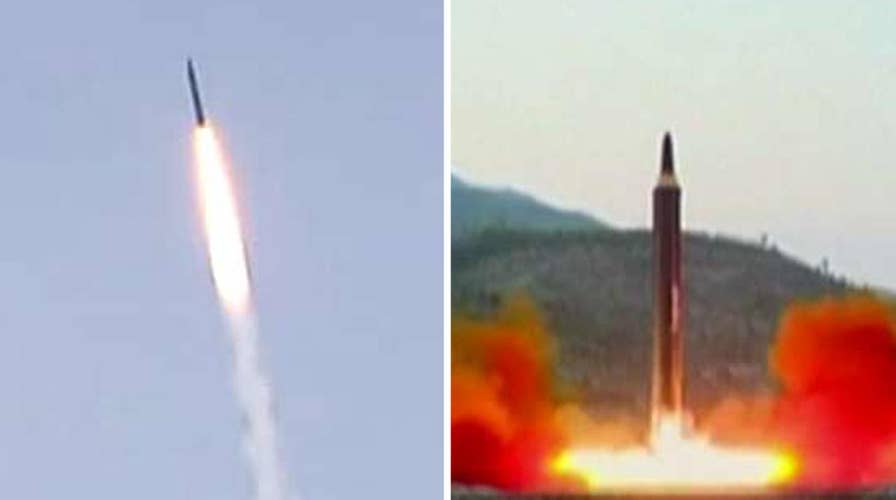Pentagon performs test to shoot down ICBM
Ground-based interceptor missile launched from Vandenberg Air Force Base; Jonathan Hunt reports
The U.S. military successfully shot down a mock nuclear warhead simulating the speed and range of a potential North Korean intercontinental ballistic missile, the Pentagon's Missile Defense Agency said Tuesday.
In a statement, the agency said an unarmed rocket launched from the Marshall Islands in the Pacific Ocean was "destroyed" by a ground-based interceptor launched from Vandenberg Air Force Base in Southern California as it traveled outside Earth's atmosphere.
The successful test was the first of its kind in nearly three years.
It came two days after North Korea tested a SCUD-type ballistic missile that landed in Japan's maritime economic zone in the Sea of Japan.
This system is vitally important to the defense of our homeland, and this test demonstrates that we have a capable, credible deterrent against a very real threat," said MDA Director Vice Admiral Jim Syring. "I am incredibly proud of the warfighters who executed this test and who operate this system every day."
While Tuesday's test wasn't designed with the expectation of an imminent North Korean missile threat, the military will closely look for progress toward the stated goal of being able to reliably shoot down a small number of ICBMs targeting the United States. The Pentagon is thirsting for a success story amid growing fears about North Korea's escalating capability.
The $244 million test will not confirm that the U.S. is capable of defending itself against an intercontinental-range missile fired by North Korea. Pyongyang also is understood to be moving closer to the capability of putting a nuclear warhead on such a missile and could have developed decoys sophisticated enough to trick an interceptor into missing the real warhead.
Syring's agency sounded a note of caution.
"Initial indications are that the test met its primary objective, but program officials will continue to evaluate system performance based upon telemetry and other data obtained during the test," his statement said.
About half of the previous tests of the Ground-based Midcourse Defense system have failed, attracting criticism from the Government Accountability Office and the Pentagon’s own weapons testing office, which says the system has “a limited capability” to defend the U.S. against an ICBM attack.
Faced with the prospect of an enemy state obtaining long-range weapons, the Pentagon rapidly deployed the interceptor system in 2004, long before development and testing were complete.
The Pentagon has other elements of missile defense that have shown to be more reliable, although they are designed to work against medium-range or shorter-range ballistic missiles. These include the Patriot missile, which numerous countries have purchased from the U.S., and the Terminal High-Altitude Area Defense, or THAAD, which the U.S. deployed this year to South Korea to defend against medium-range missiles from North Korea.
Thirty-six interceptors stand guard at Vandenberg and at Fort Greely in Alaska. By the end of 2017, the Pentagon plans to have forty-four.
Fox News' Dan Gallo and Jonathan Hunt contributed to this report. The Associated Press also contributed to this report.


